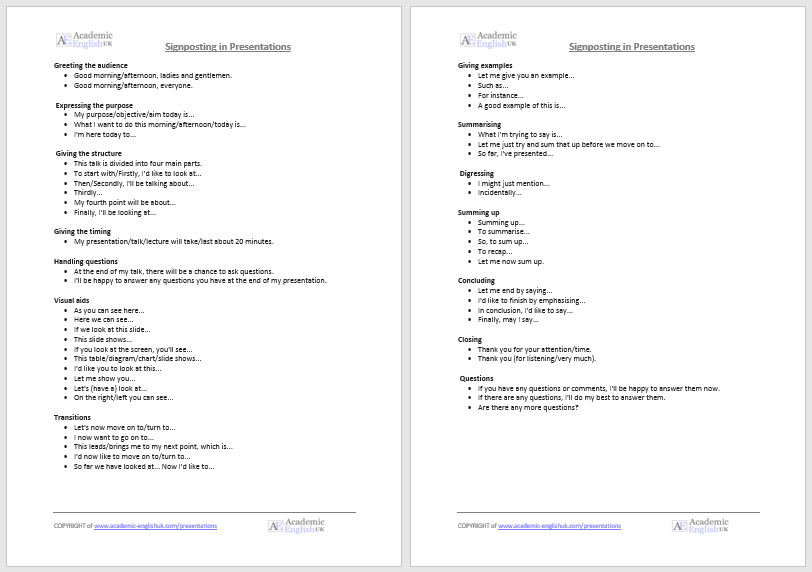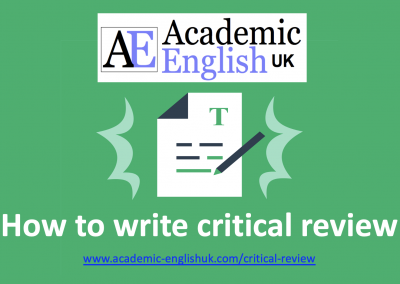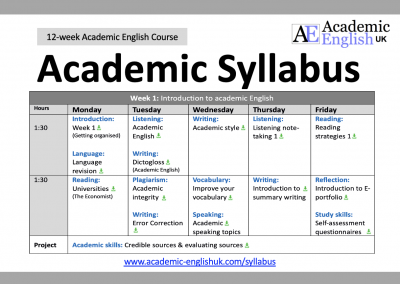Introduction to Academic Speaking
Introduction
This webpage offers three introductory lessons to academic speaking skills: seminars, presentations and debates. Each lesson includes key information on the speaking skill as well as interactive speaking activities and listening worksheets.
Seminars
An academic seminar is a small discussion on a specific topic among a group of students. At university it can be a central part of the learning process, which is often connected to pre-reading texts or post-lecture discussions. Commonly, at university English language centres, seminars have become a feature of testing English speaking through fluency, conversational skills and ability to discuss complex subjects.
What is a seminar?
Generally, it is a small discussion on a specific topic among a group of students. At university it can be a central part of the learning process, which is often connected to pre-reading texts or post-lecture discussions. Commonly, at university English language centres, seminars have become a feature of testing English speaking through fluency, conversational skills and ability to discuss complex subjects.
Why have seminars?
- Explore topics in more depth.
- Share ideas in a way that will advance your thinking.
- Learn from other people’s experiences and background knowledge.
- Improve transferable skills for career development.
Pre-seminar procedures
Students are often given pre-texts and pre-listenings before the seminar to prepare. Students are expected to read and listen to texts carefully by making detailed notes and coming to the seminar fully prepared.
A seminar test
- Students work together in groups of 4-6.
- Teachers provide a set of questions.
- Students discuss for 25-30 minutes (approx. 5 mins per person).
- Students summarise the key points in the last 5 mins.
- Students CAN refer to the texts and their notes.
- Teachers monitor and give feedback at the end.
The seminar process
- The group are called into a room, and they sit around a table.
- The questions are given out and students have 2 minutes to read and prepare by taking notes.
- The seminar begins with an opening statement: We’re here today to discuss…
- The students then begin to discuss the first question.
- Each student should make a contribution by referring to their notes / texts.
- The seminar should flow with students adding to what was previously said.
- Once everyone agrees the question has been addressed in full, they then move onto the next question.
- Important: Not all the questions have to be answered but they should be discussed in order.
- Once the students begin to approach 25 minutes, they should bring it to an end by each one summarising a main point raised.
key points to a seminar
- It should be a flowing conversation with everyone involved and contributing.
- The teacher / tutor should not intervene if it goes quiet but let the students manage the discussion.
- Students have to show confidence and demonstrate thorough awareness of the texts.
- Dominant students are penalised for excluding others.
- Students are penalised for just reading notes.
- Key debate phrases should be used to show conversation skills – agreeing, disagreeing, interrupting, etc…
 Seminar Speaking Criteria x 2 (updated 2023)
Seminar Speaking Criteria x 2 (updated 2023)
This includes one basic seminar speaking criteria to assess seminar speaking skills and contains four key criteria: Language Accuracy (20%), Language Range (20%), Pronunciation (20%) & Communicative Effectiveness (40%), and one seminar criteria that includes ‘reference to materials’. Level: ***** [B1/B2/C1] Example / Level: ***** [B1/B2/C1] TEACHER MEMBERSHIP
An Introduction to Seminars (new 2023)
This lesson is designed to introduce students to seminars. It contains information on what is a seminar, the seminar procedure, seminar phrases, and academic seminar practice using two short academic texts (reading & lecture). Example. Level: ***** [B1/B2/C1] TEACHER MEMBERSHIP / INSTITUTIONAL MEMBERSHIP
Seminar Phrases Sheet: A Range of Standard English Phrases
Suitable phrases to use for opinions, facts, examples, adding information, interrupting, summarising and concluding.
*
Presentations
Academic presentations are an integral part of university study and assessment. The key difference between an academic presentation and a general presentation is that it is usually quite formal and includes academic research to evidence the ideas presented. The presentation will include references to credible sources and will demonstrate clearly your knowledge and familiarity of the topic.
Giving a good academic presentation
- Think about the aim of your presentation and what you want to achieve.
- Concentrate on your audience: who they are and what they (want to) know.
- Choose the topic that interests you: involvement and motivation are key to confidence.
- Give your presentation a clear and logical organization so that everyone can follow.
- Present information visually: this adds interest to your talk and makes it easier to follow.
- Practise giving your presentation until you are familiar with the key points; this way you may discover any potential problems and check the timing. Besides, practice will also make you feel more confident.
Basic outline / structure
- Introduction: introduce the topic, some basic background, thesis (your stance or argument).
- Outline: provide basic bullet points on the key parts of the presentation.
- Main body: divide the main body into sections.
- Evaluation: always include evaluation. This can be a separate section or part of the main body.
- Conclusion: summarise key points, restate the thesis and make a recommendation / suggestion / prediction.
- Reference list: create one slide with all your sources.
- Questions: be prepared to answer questions.
Delivery
- Cope with nerves: breathe deeply; it calms you down and stops you from talking too quickly.
- Control your voice: speak clearly and try to sound interesting by changing intonation and rhythm.
- Watch your body language: try to give the impression that you are relaxed and confident.
- Maintain eye contact with your audience: it keeps them interested in what you are saying. For this reason, you should not read.
- Provide visual information, but do not give too many facts at a time. Give your audience enough time to take them in.
- Keep attention by asking rhetorical questions.
Presentation Speaking Criteria
This is a basic criteria to assess presentation speaking skills. It has three key criteria: Language accuracy & language range, fluency & pronunciation, and presentation & engagement. Example / Level: ***** [B1/B2/C1] TEACHER MEMBERSHIP
Introduction to Presentations (new 2023)
This lesson is designed to introduce students to academic presentations. It contains information on how to plan, structure, and deliver an academic presentation. It includes a listening worksheet, presentation signposting phrases and a mini-presentation activity. Example. Level: ***** [B1/B2/C1] TEACHER MEMBERSHIP / INSTITUTIONAL MEMBERSHIP
Debates
A debate is, basically, a for or against argument. You have to debate why your position is correct and why your opponents’ are wrong. You are allocated a time to present your arguments and add rebuttals to the opposing points. You need to support your ideas with evidence such as facts, figures, stats and sources.
What is a debate
A debate is, basically, a for or against argument. You have to debate why your position is correct and why your opponents’ are wrong. You are allocated a time to present your arguments and add rebuttals to the opposing points. You need to support your ideas with evidence such as facts, figures, stats and sources.
Why have seminars?
- Explore topics in more depth.
- Share ideas in a way that will advance your thinking.
- Learn from other people’s experiences and background knowledge.
- Improve transferable skills for career development.
The topic
The topic is often current issues of public importance (‘Climate change should be taken more seriously’) or about general philosophies or ideas (‘beauty is better than brains’). The team that agrees with the topic is called the AFFIRMATIVE and the team that disagrees with the topic is called the NEGATIVE (or the opposition).
A Seminar Test
- Students work together in groups of 4-6.
- Teachers provide a set of questions.
- Students discuss for 25-30 minutes (approx. 5 mins per person).
- Students summarise the key points in the last 5 mins.
- Students CAN refer to the texts and their notes.
- Teachers monitor and give feedback at the end.
The Setup
Usually, the debate consists of two teams of three speakers. There should be a time-keeper and a judge(s) (sometimes this is the audience). Each presenter has a specific time (4 minutes) to present ideas and their rebuttals and after each presenter has spoken, the judge(s) evaluates the debate on the basis of the content, style and strategy of speeches.
Introduction to Debates (new 2023)
This lesson is designed to introduce students to debating. It contains information on debate procedures, a ‘top tips’ listening worksheet, debate signposting phrases and a range of debate questions. Example. Level: ***** [B1/B2/C1] TEACHER MEMBERSHIP / INSTITUTIONAL MEMBERSHIP
More speaking lessons
Seminar lessons
 Seminar Speaking cards
Seminar Speaking cards
This lesson has twelve seminar topics on a variety of topics. Put students into groups of four/five. Give out a card and students have 1 minute to plan what they will say. Students then discuss the question for 10 minutes [webpage]. Use the seminar assessment criteria here Level: ***** [B1/B2/C1] TEACHER MEMBERSHIP / INSTITUTIONAL MEMBERSHIP
 Speaking Tasks – Analysis & Evaluation
Speaking Tasks – Analysis & Evaluation
This lessons includes six speaking task cards (halls of residence, speaking English, greener university, plagiarism, congestion, homelessness). In small groups students discuss the situation, analyse the key issues/areas and evaluate which are the most effective (see example). Level ***** [B2/C1] TEACHER MEMBERSHIP / INSTITUTIONAL MEMBERSHIP
Seminar Listening Worksheet 1 [5 minute seminar]
This listening worksheet is four different nationalities discussing ‘American Values’. Students listen and take notes on what the different nationalities (Indian, Ethiopian, Japanese, American) say about American Values and then answer the question sheet. (see example). Level ***** [B1/B2/C1] / Video (start 0:40 – 4:40) / MP3 TEACHER MEMBERSHIP / INSTITUTIONAL MEMBERSHIP
Teacher’s Notes: Seminar Listening Worksheet 1
- Explain the seminar is four different nationalities discussing ‘American Values’.
- The different nationalities are an Indian man, Ethiopian woman, Japanese woman and an American woman.
- Play the sound only (not the visual video) two times – students take notes.
- Give out question worksheet – allow 5-10 minutes to answer.
- Video (start 0:40 – 4:40)
Seminar Listening Worksheet 2 [3 minute seminar]
This listening worksheet is four teachers discussing whether it is better to learn English online or in a regular classroom. Each teacher provider an opinion and a justification for their choice (see example). Level ***** [B1/B2] / Video (seminar: 1.11 – 4.44) / MP3 TEACHER MEMBERSHIP / INSTITUTIONAL MEMBERSHIP
Teacher’s Notes: Seminar Listening Worksheet 2
- Explain the seminar is four teachers discussing ‘whether it is better to learn English online or in a classroom’.
- Show the picture of the four teachers with their names (Ronnie, Alex, James, Adam)
- Play the video two times – students take notes.
- Give out question worksheet – allow 5-10 minutes to answer.
- Video
Seminar Listening Worksheet 3 [5 minute seminar]
This listening worksheet is three teachers discussing their views on the TED Talk lecture: The Happy Planet Index by Nic Marks (see example). Level ***** [B1/B2] / Video (5.00) / MP3 TEACHER MEMBERSHIP / INSTITUTIONAL MEMBERSHIP
Teacher’s Notes: Seminar Listening Worksheet 2
- Students watch the TED Talk LectureThe Happy Planet Index’ by Nic Marks – go here
- Explain the seminar is three teachers discussing parts of the TED Talk Lecture.
- Show the picture of video and highlight its one woman, a Scottish man and another man.
- Play the video two times – students take notes.
- Give out question worksheet – allow 5-10 minutes to answer.
- Video
 Speaking Tests / Practice x5 [new 2022]
Speaking Tests / Practice x5 [new 2022]
These academic speaking tests are similar to the Cambridge B2 First (FCE) speaking exam but follow a university-based narrative. These tests (or lessons) are designed for lower-level students (A2, B1, B2 level) to provide valuable speaking practice around the social English aspect of university life and study. Each test is divided into four parts; general topics, photograph comparison, a task and opinion based questions (see example). Level ***** [A2/B1/B2] TEACHER MEMBERSHIP / INSTITUTIONAL MEMBERSHIP
*
 Self-Assessment Questionnaires [new 2022]
Self-Assessment Questionnaires [new 2022]
These academic English self-assessment questionnaires focus on the four key skills of reading, writing, speaking and listening. Each questionnaire focuses on the individual elements of each skill and students rank their confidence level accordingly. These questionnaires help students evaluate and assess their learning and encourage learner autonomy. Questionnaire worksheet example. Level ***** [B1/B2/C1/C2] TEACHER MEMBERSHIP / INSTITUTIONAL MEMBERSHIP
*
Presentation lessons
Presentation Speaking Criteria
This is a basic criteria to assess & grade presentation speaking skills. It has three key criteria: Language accuracy & language range, fluency & pronunciation, and presentation & engagement. Example / Level: ***** [B1/B2/C1] TEACHER MEMBERSHIP / INSTITUTIONAL MEMBERSHIP
 Improve your Presentation PowerPoint Slides
Improve your Presentation PowerPoint Slides
These are PPT slides from the above video or go here. It’s a great way to explain how to present effective slides by using the correct fonts, focusing on key points and using animation to help audience engagement. The slides can be adapted to sort your style and method of teaching. Video [12:00] Level ***** [B1/B2/C1] / TEACHER MEMBERSHIP / INSTITUTIONAL MEMBERSHIP
*
 Create PPT slides people will remember – Duarte Inc [CEO]
Create PPT slides people will remember – Duarte Inc [CEO]
Harvard Business Review: How to plan an informed presentation and what is needed to create really effective slides that keep an audience engaged. More HBR listening worksheets are Example Video [03:08] Level: ***** [B2/C1] / TEACHER MEMBERSHIP / INSTITUTIONAL MEMBERSHIP
*
Describing graphs: analysis and evaluation (updated 2023)
This lesson begins with describing basic graphs and suggesting what they could represent. It then provides the language necessary for describing, analysing and evaluating. This is followed by students researching and analysing graphs/charts/tables from the Office of National Statistics (ONS) and giving a short presentation on their findings. Example. Level: ***** [B1/B2/C1] TEACHER MEMBERSHIP / INSTITUTIONAL MEMBERSHIP



















